1. User experience
1.1. Effective digital experience
1.2. Understanding people
1.3. Tools
1.3.1. scenarios
1.3.2. storyboard
1.3.3. swimlane diagrams
1.4. Mission / proposition
1.4.1. what is our mission?
1.4.1.1. of the digiral experience
1.4.2. what is the promise?
1.4.2.1. how it's delivered?
1.5. The wholo service infrastructure
1.5.1. experience
1.5.1.1. different channels linked
1.5.2. one service, multiple platforms
2. Digital strategy
2.1. Web teams
2.1.1. communications
2.1.2. it
2.1.3. marketing
2.1.4. external
2.2. challenges
2.2.1. demand is NOW
2.2.2. aligned with strategy?
2.3. Future
2.3.1. no silos
2.3.2. deliver fast
2.3.3. coordination
2.4. Follow the same strategy
2.4.1. goals
2.5. Digital center of excellence
2.5.1. coordinate
2.5.2. monitor
2.5.3. educate
2.5.4. share experiences
2.5.5. sparring
2.5.6. decrease marketing cost
2.5.7. develop decentrally
2.6. Social media
2.6.1. online listening
2.6.2. talking about ideas
2.6.3. harvesting
3. Digital team
3.1. Global
3.1.1. empower people
3.1.2. yearly personal meetings
3.1.3. strategic placement
3.1.4. 24h working circle
3.1.5. regular contact
3.1.6. web / teleconf
3.2. Grow team
3.2.1. agencies
3.2.2. students / interns
3.2.3. customers
3.2.4. stakeholders
3.3. Right people
3.3.1. global mindset
3.3.2. I'll do it, fire me if you don't like it
3.3.3. skills
3.3.3.1. online learning
3.3.3.2. project management
3.3.4. Push yourself
3.3.5. think outside the box
3.3.6. Risk taking
3.3.7. Self motivated
3.3.8. say no to "this is how we always have done it"
3.4. Same objectives as the company
4. Aligning digital and business strategy
4.1. Business model canvas
4.2. Inventory'
4.2.1. does this support our strategy?
4.3. Digital scorecard
4.4. Surveys
4.5. Translate digital to business language
4.6. Goal is number one
5. Governance
5.1. effective communication
5.1.1. articulate
5.2. dialog
5.3. Goals!
5.4. Strategy
5.4.1. Current state, actions, desired state
6. Social Media & Digital Strategy
6.1. Some goals
6.1.1. brand awareness
6.1.2. increase revenues
6.1.3. find brand ambassadors
6.1.4. new customers
6.1.5. transparency
6.2. Strategy + tactics + realization + controllin + people
6.2.1. social part of digital strategy
6.3. Different needs (Noriaki Kano)
6.3.1. Basic need
6.3.2. Performance need
6.3.3. Excitement need
6.4. Right mix of people
6.4.1. The Enthusiast
6.4.1.1. find ambassadors
6.4.2. The Ambassador
6.4.2.1. talk to organisation,
6.4.2.2. find contributors
6.4.3. The Contributor
6.4.4. The Publisher
6.4.5. Enthusiast find ambassafors who find contributors
6.5. Roles, organisation
6.6. What to do
6.6.1. talk to target groups
6.6.1.1. need to know who are the targets
6.6.2. get to know your organisation
6.7. How to convincve management
6.7.1. be credible, know the social space
6.7.2. show who is there already (Big Names)
6.7.3. what is the overall story?
6.8. Examples of marketing successes
6.8.1. Cree Lightning Video
6.8.2. Corning Gorilla Glass
6.9. Change Management
6.9.1. Current situation
6.9.2. Transition
6.9.3. Future
6.9.3.1. where do we want to be?
7. Social Business Collaboration
7.1. Roles
7.1.1. The Enthusiast is a translator
7.1.1.1. what does this mean for us? for our business?
7.1.1.2. talk so that humans understand
7.1.1.3. talk "executive"
7.2. Where to start
7.2.1. do your homework
7.2.1.1. internal
7.2.1.2. external
7.2.1.3. competitors
7.2.2. what are we doing now?
7.2.3. the goal?
7.3. Plan for adoption
7.4. AIIM roadmap
7.4.1. aiim.org
7.5. Business value?
7.5.1. productivity
7.5.2. cost savings
7.5.3. growth
7.5.4. locate expertise
7.5.5. collaborate
7.5.6. organize
7.5.7. personalize
7.6. Trust
7.6.1. people at the core
7.7. Risks
7.7.1. FUD
7.7.2. data protection
7.7.3. compliance
7.8. Policy
7.8.1. educate staff
7.8.2. decide governance
7.8.3. update policies
7.9. Tactics
7.9.1. refuse email attachments, upload to the service instead
7.10. The Circle
7.10.1. 1. Executives
7.10.2. 2. Community managers and advocates
7.10.3. 3. Business use cases
7.10.4. 4. Education & support
7.10.5. 5. back to 1.
7.11. Adoption
7.11.1. Executives
7.11.2. Taxonomy
7.11.2.1. allow patterns
7.11.3. Politics / culture
7.11.4. Fit with other tools
7.11.4.1. educate what goes where
7.11.5. Deployment
7.11.5.1. plan for adoption
7.11.6. Staffing
7.11.6.1. locate advocates
7.11.6.2. executives
7.11.6.3. share work in progress
7.11.7. Content
7.11.8. Conversation
7.12. Engage advocates
7.12.1. Grassroots
7.12.2. Share community work
7.12.3. Increase reach
7.12.3.1. local support
7.12.3.1.1. have a program for these
7.12.3.2. show passion
7.12.4. Prune / Curate
7.12.5. Provide trusted feedback
7.13. How to find advocates
7.13.1. Appoint volunteers
7.13.2. Find natural champions
7.13.3. Ask for volunteers
7.13.4. Rewards
7.13.4.1. access
7.13.4.2. regognition
7.13.4.3. visibility
7.13.4.4. incentives
7.13.4.5. personal touches
7.13.4.6. road map / piloting
7.13.4.7. influence
7.13.5. 2 ties model
7.13.5.1. advanced
7.13.5.2. basic
7.14. Build business use cases
7.14.1. Peer support
7.14.2. Innovation
7.14.3. Project work
7.14.4. "Ask your colleagues"
7.14.5. Finding experts
7.14.6. Show the good cases openly
7.14.7. Executive communications
7.14.8. Career development
7.15. User education / support
7.15.1. Policy
7.15.2. Employer
7.15.3. Leadership
7.15.4. New roles
7.16. "Culture of dialog"
7.17. Skills
7.17.1. Business Skills
7.17.2. Tool Skills
7.17.3. support model for users
7.17.4. editorial
7.17.5. elearning
7.17.6. crisis management
7.17.7. new media skills
7.17.8. time allocation
7.18. Resources to check out
7.18.1. Community Backchannel
7.18.2. Community Roundtable
7.18.3. Social Business Council
8. Michael Edson -keynote
8.1. Strategy is a language that does work
8.2. Check these
8.2.1. 1. What world I'm living in
8.2.2. 2. What impact does my organisation want to have in the world
8.2.3. 3. What should I do today?
8.3. Most of the smart people work for someone else
8.4. Future doesn't matter
8.5. Design patterns
8.5.1. Extra terrestial space advisor
8.5.2. On ramps and loading docs
8.5.3. Edge to core
8.5.4. Self awareness about organisational change patterns
8.5.5. Focus on mission
8.6. Book recommendations
8.6.1. Smart Mobs
8.6.2. The Future of Ideas
8.6.3. Wikinomics
8.6.4. Cognitive Surplus
8.6.5. Myths of Innovation
